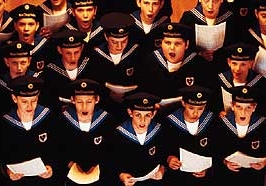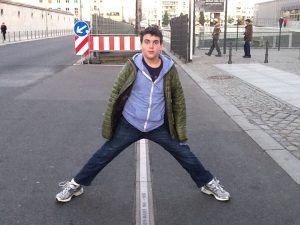European Travel Notes
Vienna, Prague, Berlin
Over the past 10 days, I had the extraordinary pleasure of traveling Europe with my wife Nancy, 13 year old son Samson, and Alex, 20, currently studying at the Vienna University of Economics and Business.

Our first stop was Vienna, a city with extraordinary history, culture and sophistication. Located on the magnificant Danube River, Vienna is a sprawling metro that blends both new and old. The city was home to the Austrian-Hungarian Empire ruled by the Habsburg Dynasty from the 1300’s to the end of World War I in 1918. Moreover, the city claims home to many other notables, including Mozart, Albert Einstein, European branch of the United Nations, OPEC, and of course, the Vienna Boys Choir just to name a few.
The streets are a mix of new and old, featuring the best of the architecture from over 800 centuries. Home of the famous wienerschnitzel, we found our best meals to be what my kids call “street meat”. You got it, the most amazing Vienna sausage in a semi-hard huge roll of freshly baked Viennese bread.

After three days in Vienna, we took a 4 ½ hour train ride to Prague, possibly the most beautiful city in Europe. Set on both sides of the Vltava River, this medieval city is bursting with vibrancy as it emerges from over 50 years of communist suppression. Having escaped the bombing of World War II, it’s hard to find any structure less than 300 years old. Streets and sidewalks alike are paved with stones.
The city has a progressive secular culture which welcomes anything and anyone from around the world. Legalized gambling, marijuana and prostitution feature just some of the vices or pleasures that this beautiful city has to offer. While in Prague, we had a rondezvous with Dinos Contantine of vAuto and Mike Zimbrick of the Zimbrick Auto Group in Madison, Wisconsin. Mike owns a historic three bedroom flat in Prague, where he lives six months out of the year. It was a most unusual venue to enjoy the company of Dinos, his wife and Mike. My only warning about Prague is that we were not a fan of Czech food. Mike Zimbrick helped us navigate and find the most desirable places to dine and see.
From Prague, we drove 4 hours to Berlin with a stop for lunch in Dresden. Even up until our arrival in Berlin, I had questioned why our travel agent recommended this city as the last stop on our agenda. As it turned out, it was the most fascinating.
Our hotel was in East Germany and was a converted 19th century bank building. The lobby, hallways and rooms made one feel that they were residing in a bank that conducted the business of Germany’s economy, truly a unique experience.
What makes Berlin such a fascinating place however, is the fact that it has a tortured soul. Not to mention its medieval forays and foibles, the city bore witness to two of the most horrendous events of the 20th century. First and foremost, Berlin was the birth place of the Nazi movement and ultimately headquartered the machinery of the holocaust in the Second World War. In the Garden of Beasts, a book that I had recently read, provided rich context for the sites that we visited, notably the famous Tiergarten, and its Lietzenberger Straße.

One has to wonder how the German people in general, and the people of Berlin in particular live with the knowledge of the destruction caused by their forbearers. The answer is that they confront it, but provide little if any explanation because, as they say, there simply is none. Monuments to the holocaust have been built all throughout the city to provide a solemn reminder of the topography of terror. As if the atrocities of World War II weren’t enough for the Berlin psyche, it was followed by the division of the city from the Yalta Agreement. Soon there after, the divided city of West Berlin began the process of rebuilding a capitalistic and commercially booming city sector. On the other side of the wall, the Soviets invested little in the bombed out landscape, other than the erection of pre-fab apartment complexes that resemble low-income project buildings. Gray in tone and mid 20th century in form, East Berlin stands in stark contrast to its rich west- side counterpart.
Since the fall of communism, a vast investment has poured into East Germany. First beginning in the city center and slowly spreading into the depths of the East, it is now beginning to emerge as a viable middle income and lower cost alternative to its West Berlin counterpart. Because there was formerly two cities, there are almost 2 of every institution, including train stations, city halls, airports, etc. In fact, today there are now almost three of everything as the city has sought to reunify itself by building new structures of institution in what was formerly known as no-man’s land, space that was previously occupied between the walls of East and West Germany.
The most meaningful sign of Berlin’s tortured soul was a statement made by our tour guide that until last year when Germany hosted the World Soccer Cup and finished 2nd, it was considered to be bad form to publicly display the German flag. Imagine a country so tortured by its past that its flag was a symbol of shame.
Although Berlin evidences construction almost everywhere, it suffers from the burden of its modern social democracy. Evidence of this burden can readily be seen in the fact that every tree in Berlin is numbered. This provides the Ministry of Trees an efficient means for scheduling tree triming. This numbering system reflects both the burden of a socialistic government, and also the efficient mindedness of the German culture. With heavily subsidized housing, healthcare and retirement, calculations predict that Germany will not be able to sustain its system beyond the mid-century mark. This fact is a looming sign that Berlin has not yet realized its ultimate destiny.
Departing Berlin for home, I realize that in spite of all of America’s troubles, it still stands as a beacon of opportunity, civility and liberty.
It’s great to be home.
